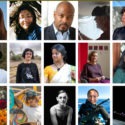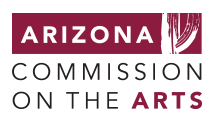Welcome to the fifth and final installment of Inside the App, a weekly five-part series designed to walk prospective applicants through the Artist Research and Development Grant application and outline some general principles of effective grant writing for artists.
With just more than a week until the Thursday, August 25 deadline to apply for an Artist Research and Development Grant we’ll close this series of blogs with a brief discussion of work samples.
Work Samples
One last time, for old time’s sake: all components of your application should should work together to address the evaluation criteria: Impact, Feasibility, and Artistic Strength.
I’m starting here, because in a grant application with such tight restrictions on the size and number of work samples that can be submitted, it’s vitally important to remember what you are trying to accomplish with the work samples you submit. Consider the story you are telling in your narrative responses about the course of your work and the areas of research and development you wish to pursue. Consider what you are trying to express about yourself and your work in your artist bio and artist statement. Consider how you might best evidence your ability to achieve the work you propose to accomplish within the timeline and budget you have outlined.
Your work samples can and should strengthen and support all other components of your application. Choose them wisely.
Pay attention to requirements
As stated in the grant guidelines, work samples that do not follow the specified guidelines will not be reviewed. Perhaps we should take another look at those specifications:
- Audio (music, vocals, spoken word or sound-based art)
- Provide one file, up to three minutes in length, of one or several short works or excerpts of works.
- Video (performance art, film/video, music, dance, theatre, spoken word or movement-based art):
- Provide one file, up to three minutes in length, of one or several short works or excerpts of works. Compress file to 50 MB or less. URLs are not an acceptable format for video samples.
- Digital Images (visual art, image-based art without motion)
- Provide a total of five (5) images.
- Images must be at least 72 dpi for viewing online and no larger than 1024 x 1500 pixels, either vertical or horizontal.
- Writing Samples (literary art, poetry, prose, script or screenplay)
- Provide a single .pdf document with no more than five (5) pages of material.
- Written material must be typed in at least 11-point font with 1” margins, labeled with the primary applicant’s full name at the top right-hand corner of each page, and numbered sequentially on the bottom right-hand corner of each page.
- Prose must be double-spaced.
- Poetry must include at least 4 poems.
Choose formats that represent your practice
If you are a musician a photo of you playing to a sold out stadium may be impressive, but an audio recording of you playing would offer reviewers much greater insight into your artistic practice. For some, the choice of how best to present their work will be easy (e.g., a photographer will most likely be best represented by their photographs), but for others it’s a matter of weighing pros and cons of various formats against each other. For example, a poet/spoken word performer may wish to be represented by her words on a page or by a video of the poem in performance. Which is the better format? That’s up to the artist, but remember to…
Prioritize strongest, most recent and relevant work
Again, consider how the work samples you provide can strengthen and support the other components of the application. Let’s imagine our hypothetical poet/spoken word performer is applying for a grant to support the development of new poems that will comprise her first book-length collection of poetry. The focus of her application, then, is the written poem as opposed to its performance. The most relevant work sample, then, would probably be her poetry on the page.
Also, remember that applicants are advised to submit work samples that represent work completed by the primary applicant within the past five years. Again, our reviewers want a sense of how the work you propose in your application reflects your development as an artist. Though a through-line may run through all of your work, from the earliest to the most recent, with such a limited number of work samples to represent your practice, the more recent samples are probably going to offer the most concise illustration of where you are and where you’re heading as an artist.
Document your work professionally
Work with what you have, but even if you haven’t got the time or the resources to attain the highest quality documentation of your work, be sure to present it in the best manner possible. If you haven’t already got professional photos of your paintings, for example, consider calling in a favor from a photographer friend or borrowing a good camera and taking the time to properly hang and light the painting. The same applies to performing artists. you might not be able to re-stage that performance you presented six months ago, but can you get yourself into a decent studio space for an afternoon to shoot a short video? Do you know someone who might be willing and able to take that video and edit it for you, ensuring that it meets the time requirements, that the audio is clear and crisp, and that it is exported according to the format specifications.
For tips on how to ensure your work looks its best, check out this blog post from Creative Capitol.
Your assignment this week:
Gather together your beset, most relevant and representative work samples.
If you don’t have great documentation of your work, do what you can and do your best.
Have a friend review the latest draft of your application and revise based on their feedback.
Related


34 Arizona Artists Awarded Research & Development Grants
Awarded through a competitive application and review process, these $5,000 grants support Arizona artists as they work to advance their artistic practice, expand their creative horizons, and deepen the impact of their work.
Read more
30 Arizona artists awarded Research & Development Grants
The Arizona Commission on the Arts awards 2022 Research & Development (R&D) Grants to 30 Arizona artists to advance their artistic practice, expand their creative horizons, and deepen the impact of their work.
Read more
Arizona Commission on the Arts and Arizona Community Foundation Announce Partnership, Additional Investments in Arizona Artists
On September 18, 2018, The Arizona Community Foundation (ACF) and the Arizona Commission on the Arts announced a joint effort to support Arizona artists, including additional funding from the recently established Newton and Betty Rosenzweig Fund for the Arts, an endowment held at ACF.
Read more
Perspectives: Danielle Foushée
Perspectives is an on ongoing series of interviews and check-ins with recipients of our Artist Research and Development Grant (ARDG). Recently, we spoke with Phoenix-based public artist Danielle Foushée about "Invitation," a piece installed at the entrance to Tempe Beach Park in October 2017.
Read more








